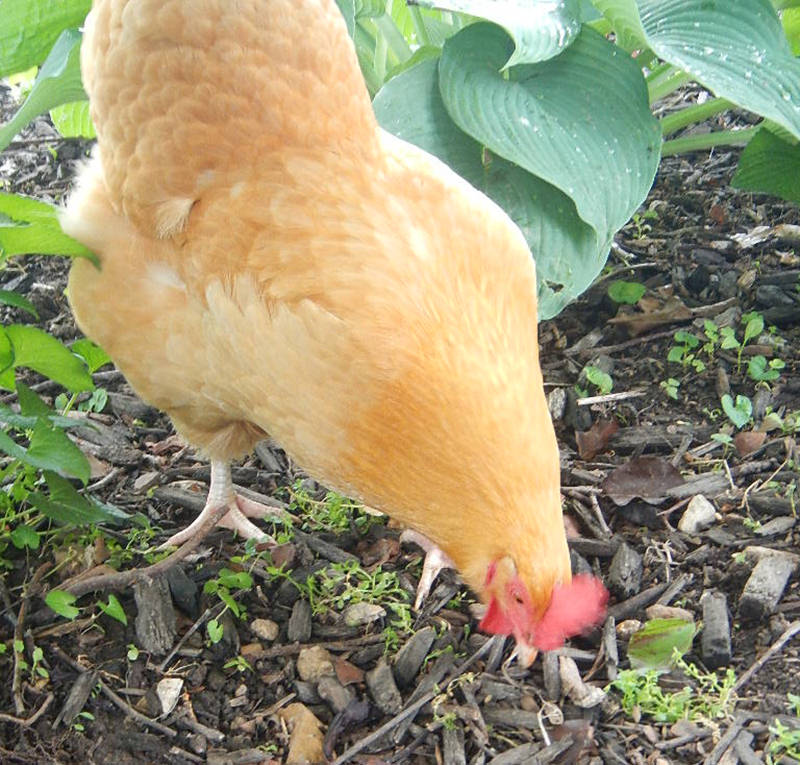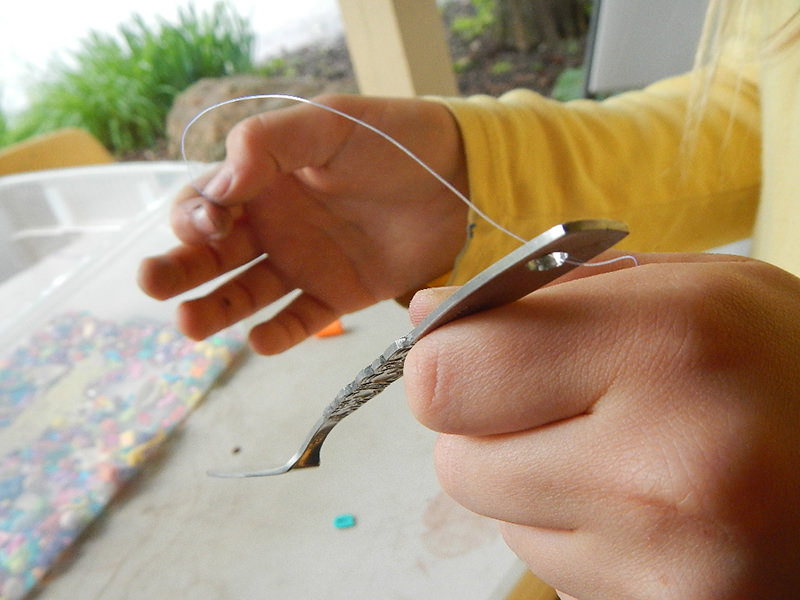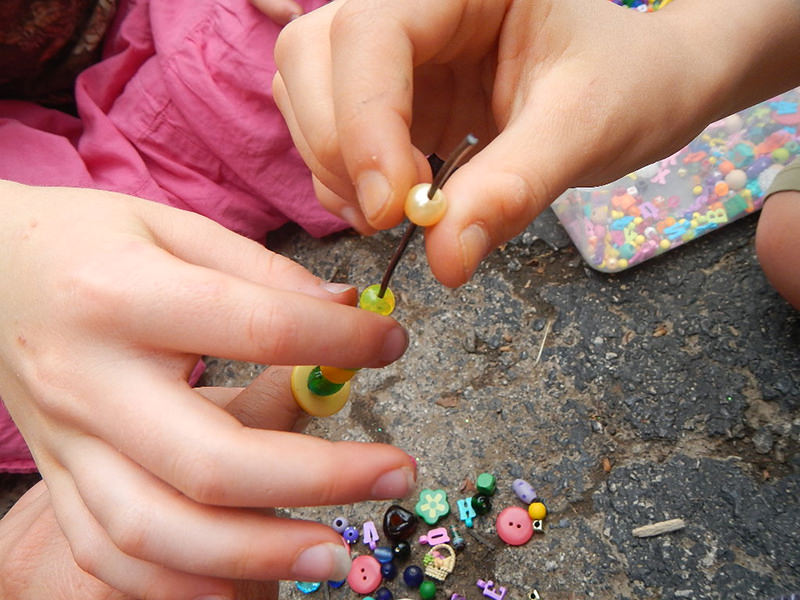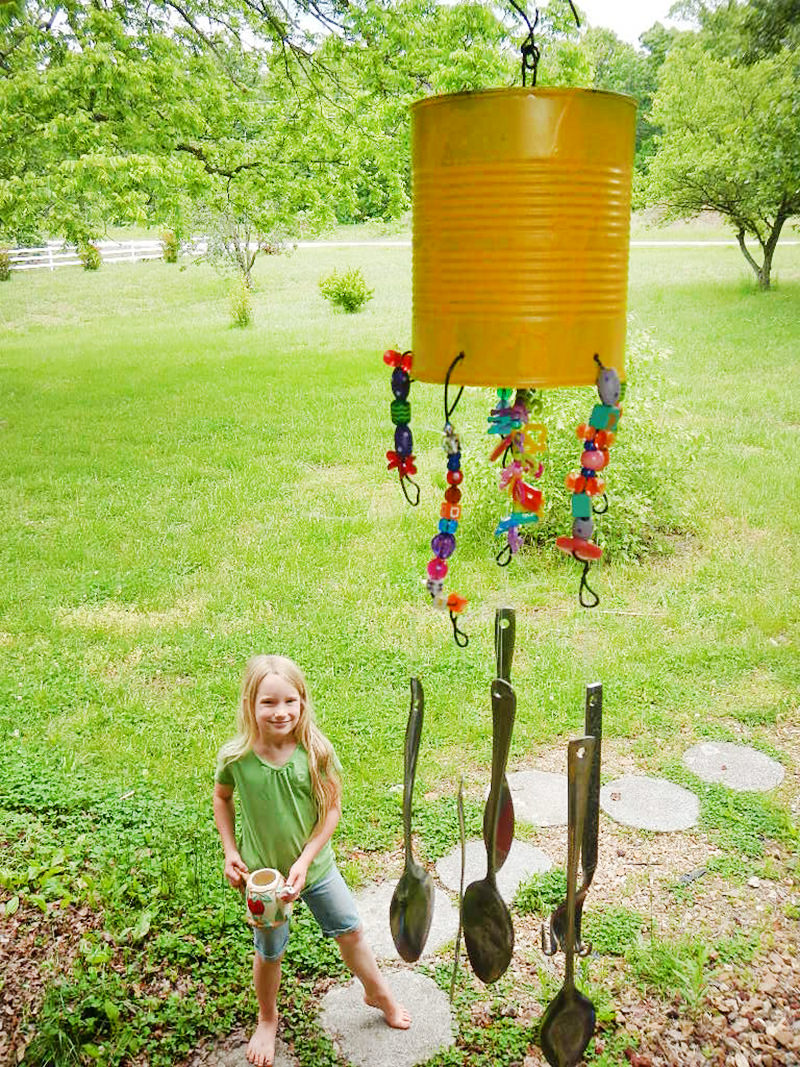
Do you see this? This is a chicken. Notice that the chicken is in a garden. Twenty acres of pasture and forest this chicken has to roam and where, you ask, does she come to peck and scratch? The garden.

Chickens actually do some good in a garden. They eat bugs, lightly till the soil and can even keep the weeds down. Wild birds also have their place. They ingest a healthy amount of detrimental bugs and keep the general mosquito population at bay. However, all birds—whether wild or domesticated can also wreak havoc in the garden with their pecking of produce and re-distribution of soil and mulch.
For free-ranging chickens, you’ll need a fence to keep them out of your garden. You can also use bird netting over your berries and veggies to prevent birds from stealing away the fruits of your labor. However, over a large area, netting gets impractical and expensive.
Short of harming the birds, the kids and I decided that the best thing to keep them out of our garden was to simply try to scare them away. To be effective at deterring birds, an object should either move or make a series of differing noises—or both. A scarecrow is perhaps the most famous method of deterring birds in the garden and most effective when you move your scarecrow around the garden every few days. You also often find those plastic, bobble-head owls in the garden centers, but their success is limited because eventually the birds figure out that the owl doesn’t move. We’ve used bird-scare metallic tape, used CDs and dollar-store pinwheels with some success.
A dollar is still a dollar, though, and we wanted to make something from materials already on hand. The people who previously lived in our house left a pile of old silverware and we had a bunch of tin cans on hand, so we made a wind chime. This idea is not new—in fact, we were inspired on Pinterest by the many different designs people have come up with. Ours is pretty basic but it does the job.
What You’ll Need
- medium-sized tin can
- fishing line
- scissors
- old silverware
- drill with bit, or hammer and sharp nail
- paint (optional)
- thin wire (optional)
- beads or buttons (optional)
- pliers and wire cutters (optional)
Step 1
Wash and dry your tin can. Remove the lid, and hammer down any sharp edges. The lids can actually be saved and used to make another kind of moving mobile to scare off birds. Paint your can before you do anything else and allow it to dry.
Step 2
Drill four to six holes along the base of the can’s open end and one directly in the center of the bottom. Your drill bit just needs to be big enough to allow for some fishing line to pass through. Alternatively, you can pound a sharp nail through the can.
Step 3

To get better sound out of your spoons, flatten them with a hammer. You can also curl the tines of your fork to change the sound a bit—plus, it looks cool.
Step 4
Drill one hole in the handle end of each piece of silverware. (You’ll need four to six pieces). If it’s actually made of silver, you should be able to use your drill for these holes because silver is very soft, but if it’s stainless steel, you may need to use a drill press. If so, be sure to lubricate your flatware with a drop of machine oil on the site where you intend to drill the hole to create friction and drill more effectively. If you have neither a drill nor a drill press, you can also simply tie the fishing line around the end of each piece of flatware. Or if you want to be slightly fancier, buy bails (small, metal jewelry hooks) or make your own hooks to affix to your flatware with a strong glue, like E6000.
Step 5

Cut a length of fishing line about 6 inches, and thread it through the first piece of silverware. Bring the ends of the line up to meet. Wrap the ends around your finger to form a loop, and place the ends through the loop, pulling it tightly to form a half knot. Your piece of silverware will dangle from this line.
Step 6 (optional)

Because we were concerned that the metal might rub through the fishing line over time (we have some strong winds), we made a hook from thin metal wire to hang each piece of silverware. And because one should never let an opportunity pass to get out the bead box, my kids decorated the metal wire. Cut 4- to 6-inch lengths of wire, and twist a hook shape in each end after decorating it with beads or buttons.
Step 7
If you choose to skip step 6, simply thread fishing line through your prepared flatware and then through the holes in the tin can. You can also add beads to the fishing line.
If you’ve used wire, place one end of the wire into a hole at the base of your tin can, hooking it in place. Clamp the wire closed around the can firmly with either your fingers or a pair of plyers. From the other end of the wire form a hook, slip the fishing line that’s attached to your piece of silverware over the hook and press the hook closed firmly. Do this for the remaining silverware.
Step 8
If you haven’t used any wire, slip one end of a 6-inch cut length of fishing twine through the hole in the base of your can and the other end through the loop attached to your piece of silverware. Bring your ends together and tie a half knot. This extra bit of fishing line gives the silverware even more pivot and swing—two things that will help it make more noise when the wind catches it.
Step 9

Using fishing line or wire, create a hook up through the center hole to hang your wind chime from. We used wire to make a loop and secured it from the inside of the can with a quick twist that prevents it from slipping back through the hole. Hang up your wind chime in the garden.

The only problem with these wind chimes is that we liked them so much, it took us awhile to get them off the patio and put them in the garden where we couldn’t hear them as well. Happily, they’re out there making noise right now and telling the bird to find a buffet somewhere else!




